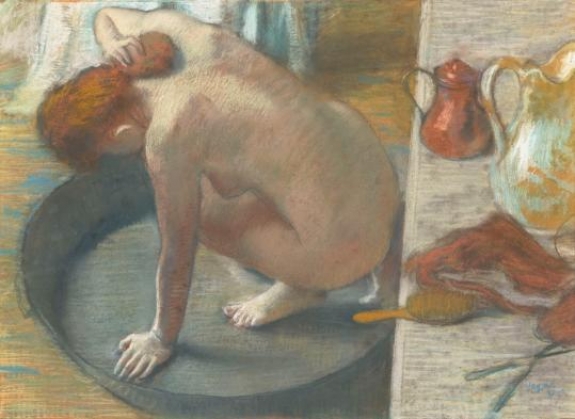No 19th-century artist paid closer attention to the naked female form than Edgar Degas. Yet none seemed to harbor such complicated feelings about women.
This alone makes “Degas and the Nude,’’ a new exhibition at the Museum of Fine Arts, one of the most electrifying exhibitions to open in Boston for years. The show opens to MFA members today and to the general public on Sunday.
If you come to the show with an image of Degas as the painter of pretty ballerinas and horse track scenes, be prepared to find something tougher. If, on the other hand, you come with your defenses up - convinced that Degas, along with being an anti-Semite, was also a misogynist - prepare to have these defenses weakened.
The MFA exhibition is the first museum show ever devoted to the subject of Degas’s career-long engagement with the naked human form. Organized by the MFA’s outgoing chairman of the Art of Europe, George Shackelford, along with the Musee d’Orsay’s Xavier Rey, it contains 160 works, more than a third of them lent by the Paris museum (where the show will open in March).
From the 1870s until about 10 years before his death in 1917, Degas knocked out one magnificently drawn, gauchely posed female nude after another. Only the means and the materials changed - charcoal, pastel, paint, monotype, lithograph, clay, pastel on monotype, and so on.
These now look like some of the greatest nudes in the history of Western art. Picking up on cultural currents that were gaining momentum in the mid-19th century, Degas aggressively stripped away centuries of idealization, sentimentality, and pomposity to reveal the female form as it was.
There was, however, an obsessiveness about the endeavor that can be disconcerting. You sense pride in Degas’s refusal to prettify, and relish in the way he continually contrived the most awkward-looking poses for his models. Right from the beginning, people described them as brutal, cruel, animalistic.
But Degas’s almost machine-like detachment is in constant tension with a sustained engagement that is sensual, marveling, and tactile. The effect, aesthetically, is a hot and cold dynamic unlike anything else in art.
Degas was the oldest of five children (three others died in infancy). His mother, worn out by child-bearing, died when he was 13. He was a lifelong bachelor who said he wanted to be “illustrious and unknown.’’



